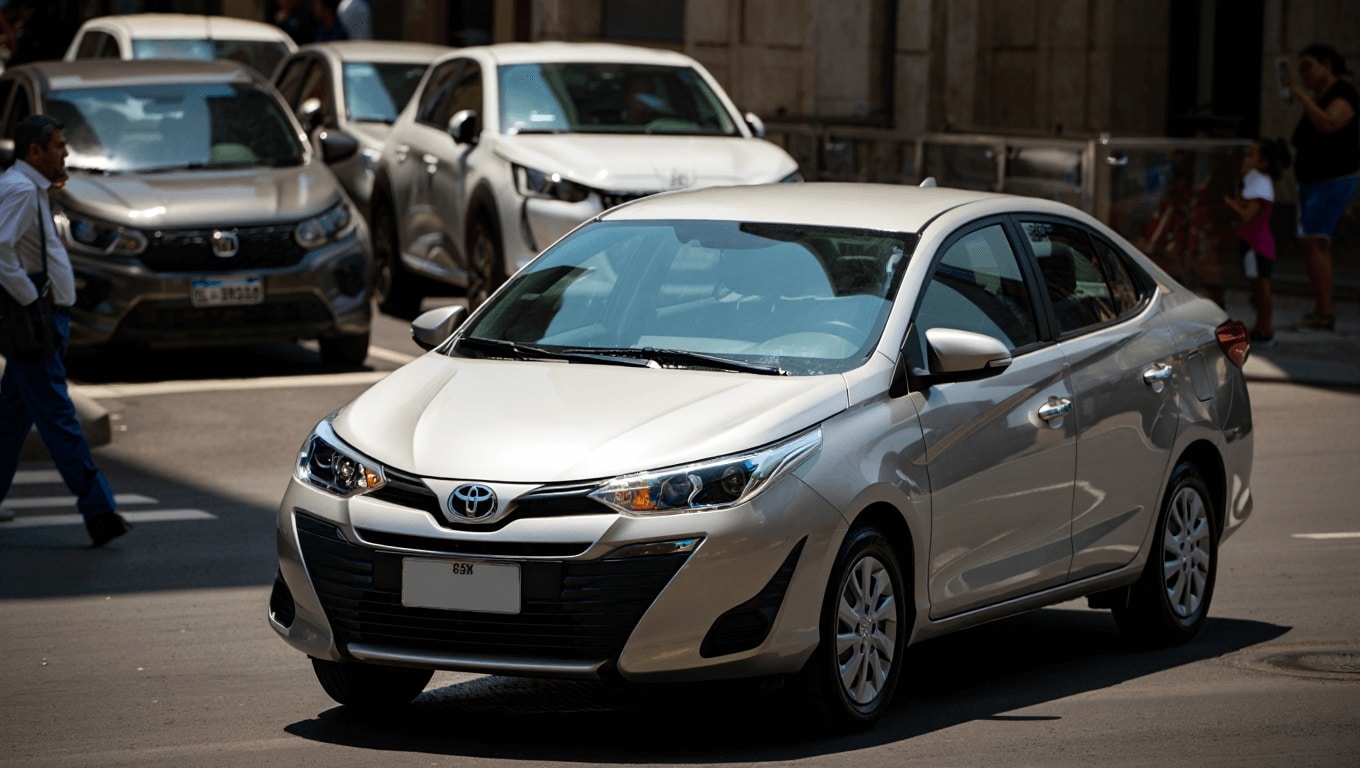In September 2025, the Argentine automotive market witnessed a significant shift in leadership as the Toyota Yaris emerged as the top-selling new car, dethroning previous leaders like the Fiat Cronos and Peugeot 208. With 3,037 units sold, the Yaris not only led the monthly sales chart but also nudged ahead in the year-to-date rankings by a slender margin of just 14 units. This tight race highlights the fierce competition among the country’s leading automotive brands, all vying for the top spot in a gradually recovering market influenced by production shifts and varying availability of models.
Emergence of Toyota Yaris as Market Leader
The Toyota Yaris’s ascent to the top of the sales leaderboard in September represents a pivotal moment for Toyota. This compact hatchback, manufactured in Brazil, has steadily gained favor among Argentine consumers, thanks to its comprehensive features and equipment options. From January to September, the Yaris registered 26,023 units, closely followed by the Fiat Cronos, which recorded 26,009 units. The negligible difference between the two underscores one of the most closely contested sales battles in recent Argentine automotive history.
Performance of Other Leading Models
While the Yaris claimed the top position, other models also showed strong performances:
- Fiat Cronos: With 2,891 units sold in September, the Cronos remained a preferred choice among compact sedans, praised for its cost-effectiveness and parts availability.
- Toyota Hilux: The Hilux continued to dominate the pick-up segment with 2,575 units, maintaining its appeal for both work and leisure use.
- Peugeot 208: The Peugeot 208, a product of significant local integration by Grupo Stellantis, saw a slight dip to 2,308 units, though it still held a prominent position in the compact car segment.
Top Ten Selling Vehicles in September 2025
The list of top ten best-sellers is a testament to the diverse preferences of Argentine consumers, with three models from Toyota making the list, showcasing the brand’s widespread appeal across different vehicle categories:
- Toyota Yaris – 3,037 units
- Fiat Cronos – 2,891 units
- Toyota Hilux – 2,575 units
- Peugeot 208 – 2,308 units
- Volkswagen Amarok – 1,961 units
- Ford Ranger – 1,913 units
- Toyota Corolla Cross – 1,793 units
- Renault Kangoo II – 1,702 units
- Chevrolet Tracker – 1,694 units
- Volkswagen Taos – 1,568 units
Market Dynamics and Future Outlook
The automotive industry in Argentina is navigating through a phase marked by economic challenges such as foreign currency availability for imports, exchange rate fluctuations, and financing conditions. Despite these hurdles, the demand for locally produced vehicles remains robust, driven by a combination of consumer preference for immediate availability and flexible financing options offered by dealerships.
The competition among top automakers is expected to intensify as they adjust their strategies to bolster regional production and minimize reliance on fully imported units. This strategic shift is likely to reshape market dynamics, making the race for leadership even more competitive in the upcoming months.
Similar posts:
- Denny Hamlin’s Gateway Triumph Is Toyota’s 200th Cup Win This Week – Why It Matters
- ACEA data: Tesla registrations -40% in Europe while BYD soars 225% in July 2025
- Harlan Coben’s Latest Thriller Hits Netflix: A Riveting Spanish-Language Mystery
- Only those who pregame Lyndhurst’s kickoff know the secret rooms: why your first hour decides everything
- Record $26.4B profit, $54B Q3 outlook—here’s what’s new and what’s next for Nvidia in 2025–26

Daniel Harris is a specialist journalist focused on the crossroads of breaking news, extraordinary history, and enduring legends. With a background in historical research and storytelling, he blends timely reporting with timeless narratives, making complex events and ancient myths resonate with today’s readers. Daniel’s work often uncovers surprising links between present-day headlines and legendary tales, offering unique perspectives that captivate diverse audiences. Beyond reporting, he is passionate about preserving oral traditions and exploring how extraordinary stories continue to shape culture and identity.

